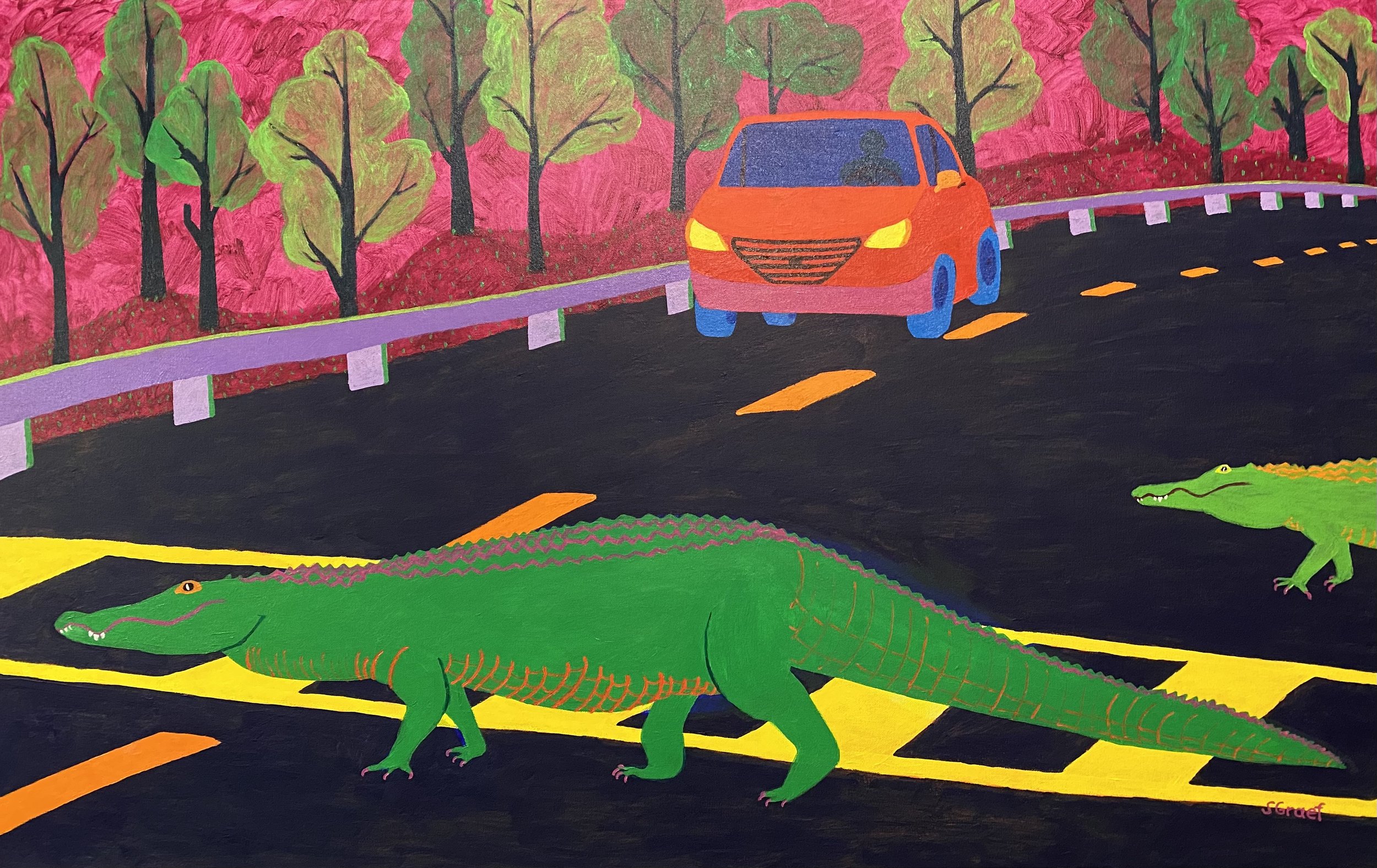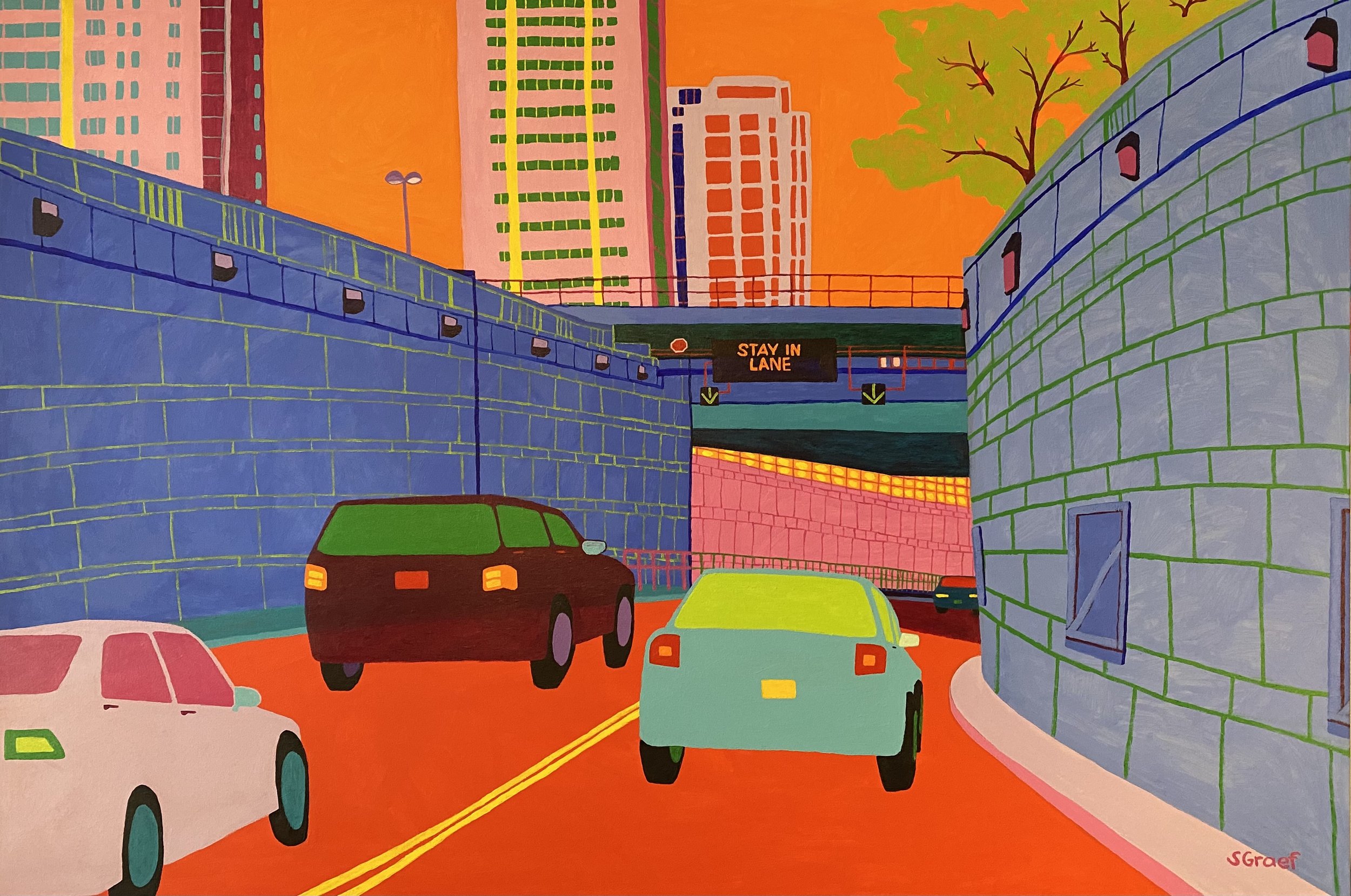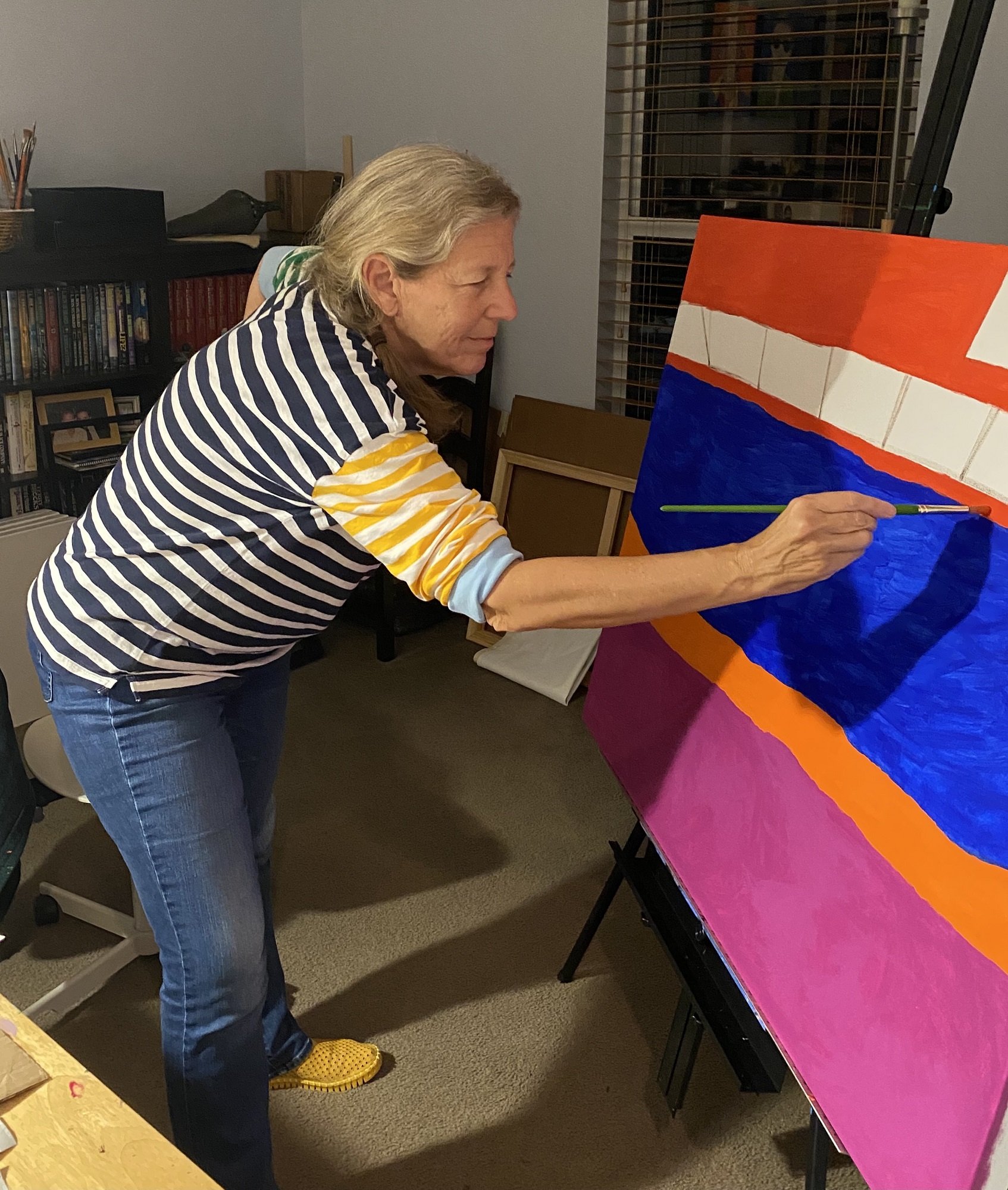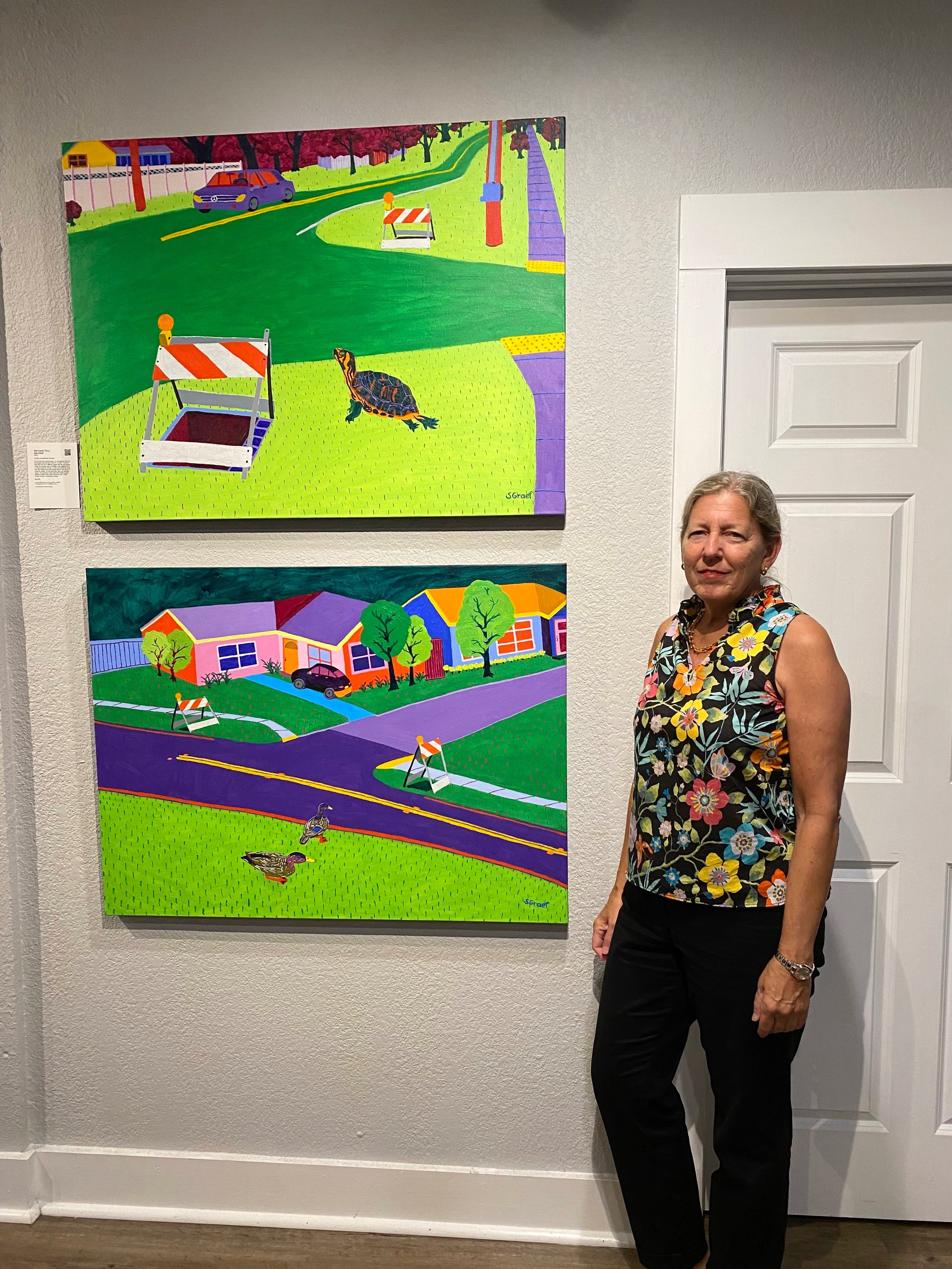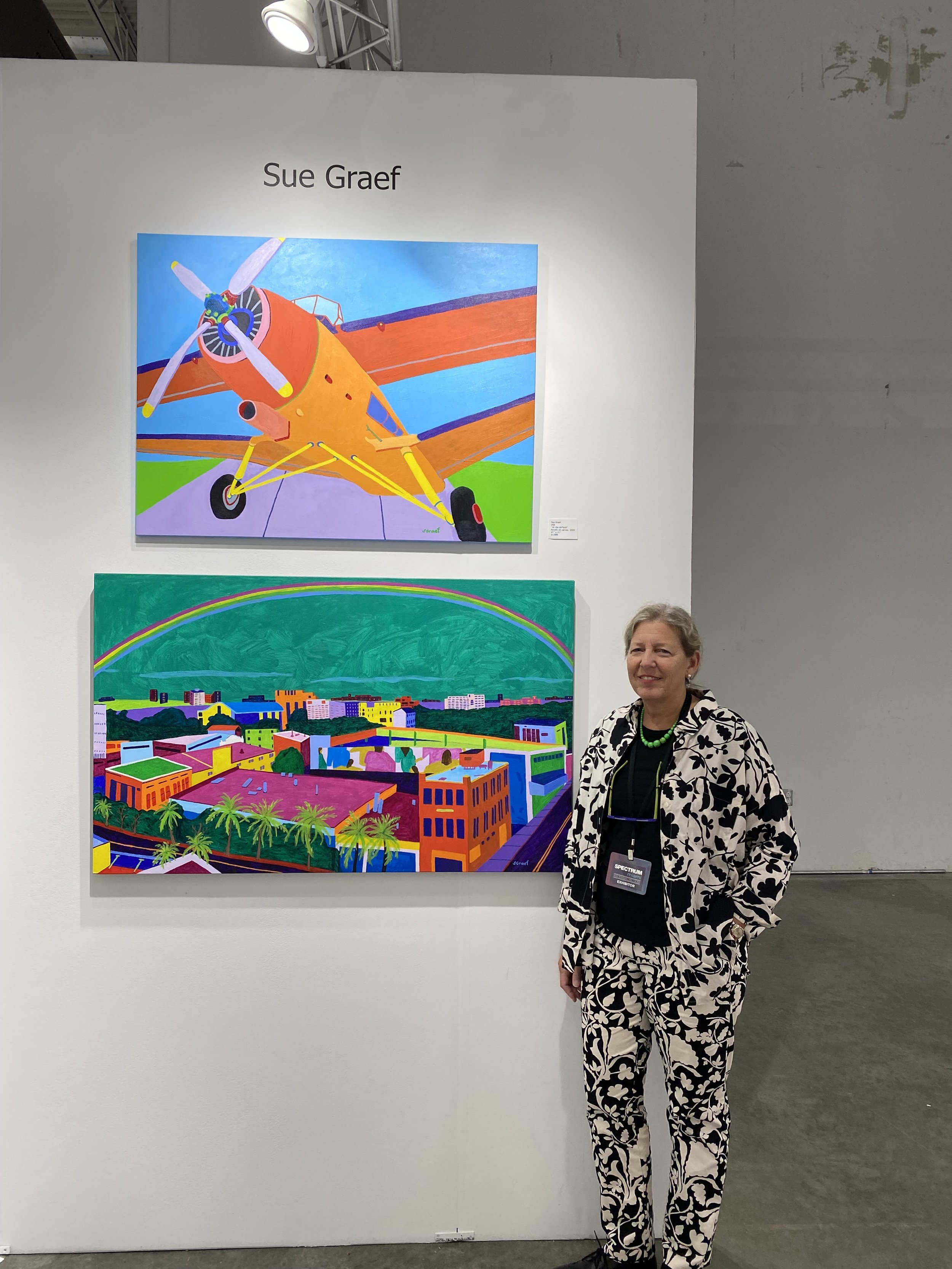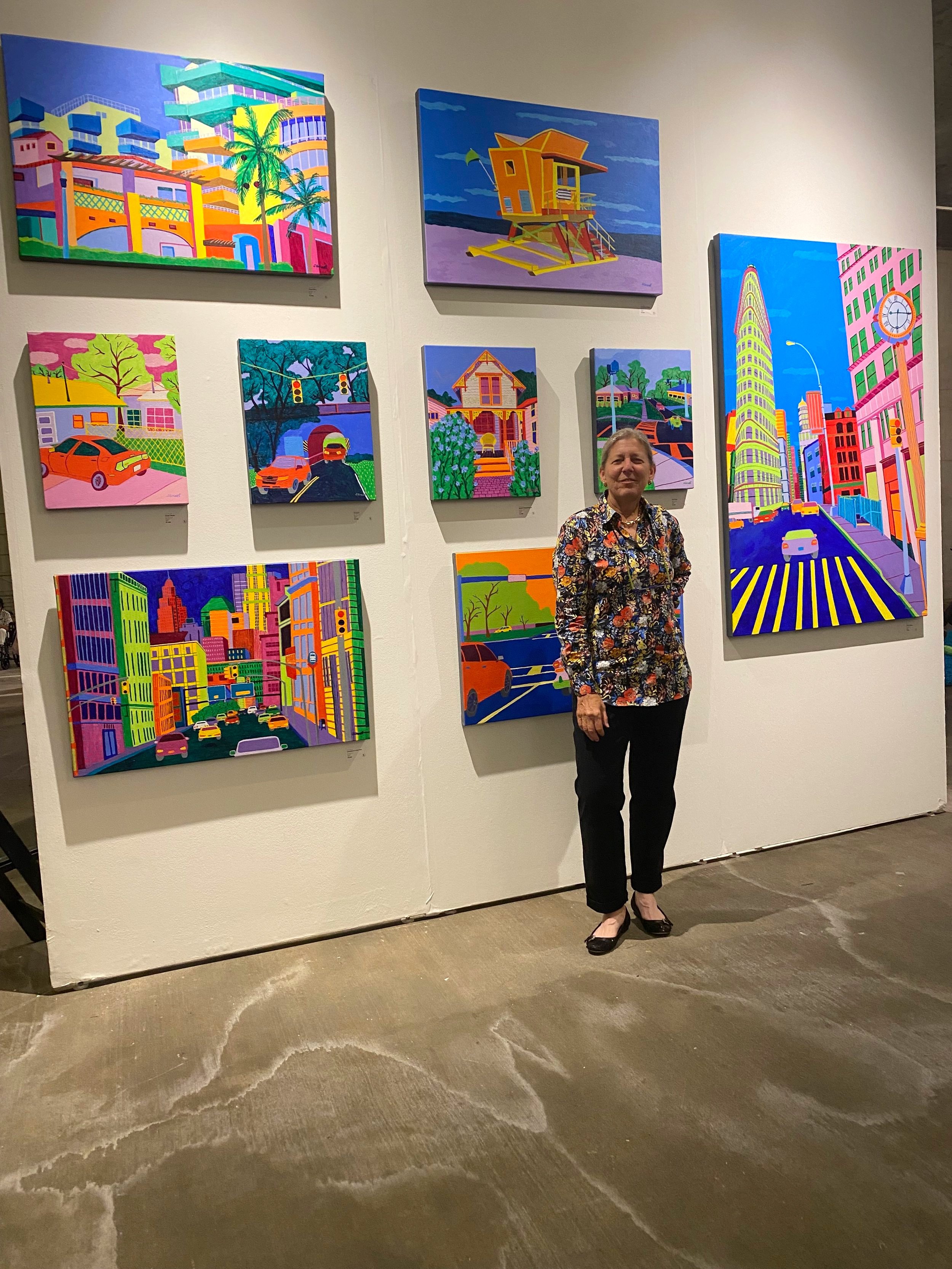Interview
Sue Graef
Sue Graef is an award-winning American artist, born in 1957 in Philadelphia, Pennsylvania. She currently lives in Clearwater, Florida.
Growing up in the suburbs not far from New York enabled her to frequently visit the museums and art galleries; a large influence in her work.
Over the last several years, she has exhibited in a diverse array of venues all over the United States, including Amsterdam Whitney Gallery of Chelsea New York, Spectrum Miami, DISTRICT Arts and Superfine Miami Beach. Future exhibitions include SCOPE Miami Beach, i.d.e.a. Museum of Arizona and a solo exhibit at ARTIFACT Gallery in New York City.
Graef attended Philadelphia College of Art, followed by Tyler School of Art, Temple University, and Clemson University.
What is your background and how did you start your journey in the art world?
“I started my journey in the art world as a very young child. I grew up with an artist mother who happened to be an excellent school art teacher, and my teacher at home. She taught me to use my imagination alongside all the traditional basics of figure drawing, landscape drawing, still life work, composition, perspective and color theory.
My concentration all through high school was in the art studio, working hard to be accepted into a good Fine Arts College. I carried a sketchbook with me everywhere I went, drawing animals, trees, flowers, people, cars and anything else I saw. When I was 16, I took weekend classes at Philadelphia College of Art, and was admitted into Tyler School of Art and Architecture after graduating from high school. Painting was my passion, and still is to this day.”
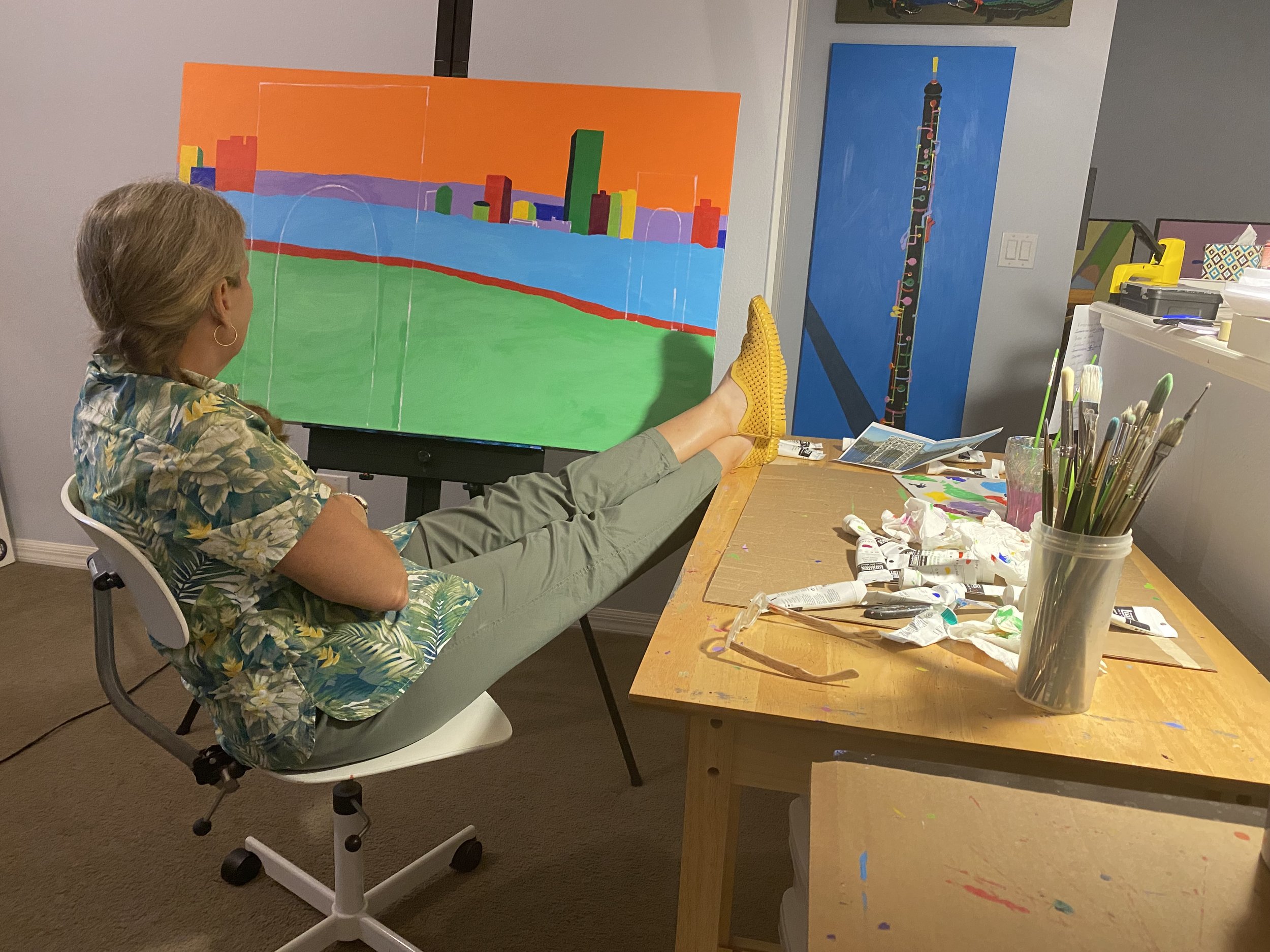

What inspires you most?
“My inspiration mainly comes from life itself—the things I see every day, from urban landscapes, driving down busy streets, the rural countryside, skyscrapers, bridges, animals, mechanical objects (large and small), and the colors, patterns, shapes and textures I see. I seem to view my surroundings through a sort of camera lens, forming compositions and color combinations as I look. Sometimes someone else will take a photograph of something I find so exciting that I ask permission to use their photograph as a starting point for my painting.”
“The message in my work is more blunt, obvious, in-your-face, and less underlying and subtle. It’s a message of playfulness and joy. It reflects my happiness in creating, my emotion of love for the world I live in, and the desire to communicate this on a broad scale.”
What themes do you pursue? Is there an underlying message in your work?
“The common theme in my current work is vibrant, brilliant color with high contrast and depth. Subject matter consists of a wide range of landscape paintings done in a lighthearted, almost whimsical mood. Think of a pink alligator, a bright green bridge, red streets and orange buildings. I especially like to take a very busy chaotic cityscape that isn’t really very aesthetic and turn it into a beautiful colorful scene, with shapes and color dancing on the canvas.”
How would you describe your work?
“The paintings are a wide variety of sizes, from 11x14 to 48x72 inches of acrylic on stretched canvas. They are startlingly bright, using highly saturated opaque color. They are void of blending and smooth transitions from one color to the next. They are mostly lines and hard edges. There is no style named or category that is suitable. The closest might be Pop Art or Fauvism, but they don’t exactly fit my work.
It’s lighthearted with the intention of causing the viewer to smile. The compositions are bold and striking re-creations of the urban and suburban landscape, rural scenes, architecture, and just about anything else I get the urge to paint.”
Which artists influence you most?
“Henri Matisse, David Hockney, and Stanley Whitney, to name a few. Although you may not see much of a resemblance in my work, there are aspects of these artists’ work that encouraged me to go down the path I find myself going as a painter.”
What is your creative process like?
“My creative process goes something like this: I see something that excites me visually. If I can’t paint it on the spot, I take a very good look, and I take a bunch of photographs for later. Then, I load all the photos on my computer and print the ones I want to use for a painting. Next, I select the canvas size I want, prepare it and get started by blocking out large shapes of color until the entire canvas is covered, making sure there is a sort of balance of color and composition happening. Then, I go back and add in the details, one by one, creating interesting patterns and depth. All the while I’m working, the outside world is tuned out, shut off and I’m in my own zone, just creating. There is no sound or time - nothing.”
What is an artist’s role in society and how do you see that evolving?
“The artist is the one setting the pace, always one step ahead, communicating.”
Have you had any noteworthy exhibitions you'd like to share?
“The 2 exhibitions I’d like to share are:
The Amsterdam Whitney Gallery, New York, NY which you can read about here.
The second is the DISTRICT Arts Gallery, Frederick, MD, which you can read about here.”


